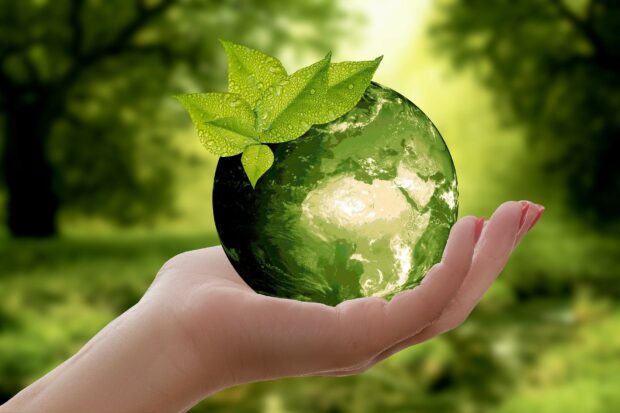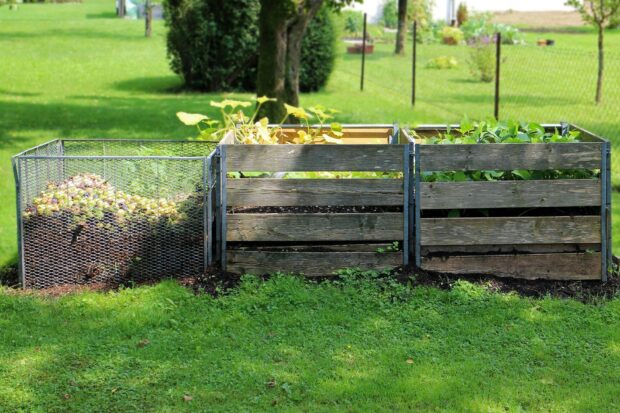A sustainable housing is one that makes efficient use of resources and energy with minimal impacts on the environment. Being eco-wise is being a good steward with what’s given to you and being able to pass those values to the next generation. Making our homes eco-friendly is a simple task. There are so many ways to ensure a better quality of life and be more sustainable. This involves less water, more reuse, less maintenance, lower life-cycle environmental impacts and better reliability.
The little things we do in our homes will help us preserve the natural landscape, cleaner air and reduce landfill waste. There are many ways we can live eco-friendly lifestyles without sacrificing the convenience that we know of. Living a clean, healthy and sustainable life can help you in every area of your life. By doing so not only does it help in contributing to a sustainable environment but it can even save you money. One such site that helps in going green is Ecoy. Switching from plastic to bamboo is a great way to reduce your carbon footprint on this earth. There are plenty of items to choose from on this website.

(9 Ways to Create An Eco-Friendly Environment at Home Credit: Pixabay)
Here are nine ways, you can pitch in by having a eco-friendly environment at your home:
Seal Air Leaks
There is a lot of energy that is wasted due to air leaks in doors, windows and other openings in your home. One of the first steps you can take is check for leaks around your home, including plumbing, electrical wall wiring and ductwork. Weather-stripping and caulking are fairly simple and inexpensive projects that can help minimize wasted energy, cut costs, and improve air quality.
Check your Appliances
Your fridge and freezer are constantly plugged in, which results in an ongoing consumption throughout the day. Now think about how much energy is consumed with the appliances present at home such a dishwasher, television, or your washing machine. These appliances consume a lot of energy and some even leak gasses into the environment. To be more eco-friendly, you can upgrade your standard appliances with energy efficient appliances. By doing so you use less energy which results in reducing emissions of greenhouse gases and air pollutants and also save money.
Cleaning and Skin-care products
Almost all household cleaning products are filled with gasses that are harmful for the environment. By switching to eco-friendly brands, you can have toxin free cleaning products that make your home more healthy and improves quality of life. Using charcoal air purifiers or natural spray is a great alternative for the traditional air fresheners such as aerosol which is harmful to the environment. You can also make your own cleaning products using items like vinegar, baking soda, and lemon juice. Skin care products can really go off the rails and end up taking quite a toll on the environment. By using eco-friendly skin products that are less wasteful and biodegradable packages.
Save Water
Conserving water should be crucial and important in every home. Whether an eco-friendly home or not, it is a precious resource and must be used wisely anywhere you live. A few ways that you can implement in your homes is switching to low flow showerheads, fixing leaks, installing aerators on your faucets. You can also consider washing clothes in cold water and air drying them to conserve energy and save money. Outside your home you can choose native vegetation for your landscaping, since they generally require less water, fertilizer and pesticides.
Sustainable materials
Choose sustainable building materials. If you’re building a new home or are planning a renovation project, selecting sustainable building materials is a great way to make your home more eco-friendly. Building an eco-friendly environment can be a great way to play your part in reducing the harm on the environment. You can use recycled steel beams in place of wood ons, composite lumber, a mixture of recycled plastic and wood fiber is a good option for decking and low-E windows can be installed to help regulate temperature. Your contribution to the green movement begins at home, which ultimately proves a deciding factor in increasing or decreasing the carbon footprint.
LED Lighting
The traditional incandescent bulbs create a lot of heat and waste a huge amount of energy. Today LED and CFLs are the trend of the market. These lightings are energy efficient and long lasting. They might cost more up front but they save you money in the long run with a long life span. Not only do LEDs and CFLs use 75% to 80% less energy than incandescent, they also last 3 to 25 times longer, according to the U.S. Department of Energy.
Use low-VOC products
Volatile organic compounds, or VOCs, can cause headaches; nausea; and irritation to the respiratory system, skin and eyes, among other ailments. They are commonly found in wood preservatives, paints, building materials, cleaning products and carpets. Aim to use no to low VOC paints and cleaning products in your home. The good news is, most of these products have a low VOC equivalent to help limit exposure.
Smart Thermostat
A simple step in conserving energy is using smart thermostats that allows you to control the temperature with help from your mobile phone. A good quality thermostat gives you access to control room by room temperature and automatically adapts to your behavior preferences. Another way of going green is using a programmable thermostat which not only reduces energy and saves money. Programs can match your schedule so it uses less energy while you’re away and picks up again when you’re home.
LEED Certified
Get LEED certified. For the ultimate green home, LEED certification is the crème de la crème. It can also be difficult to achieve, because the qualifications are so stringent. However, a LEED certified home encompasses everything that a green home should be. They use less water and energy, reduce greenhouse gas emissions, and save money. Plus, LEED certification usually increases your home’s resale value.
(9 Ways to Create An Eco-Friendly Environment at Home Credit: Pixabay)
With the pandemic still going in most countries, opting for a reusable face mask is a much more environment-friendly alternative than changing one daily. These are just some of the ways that can make your hold eco-friendly and also help conserving the precious resources for a sustainable life.




